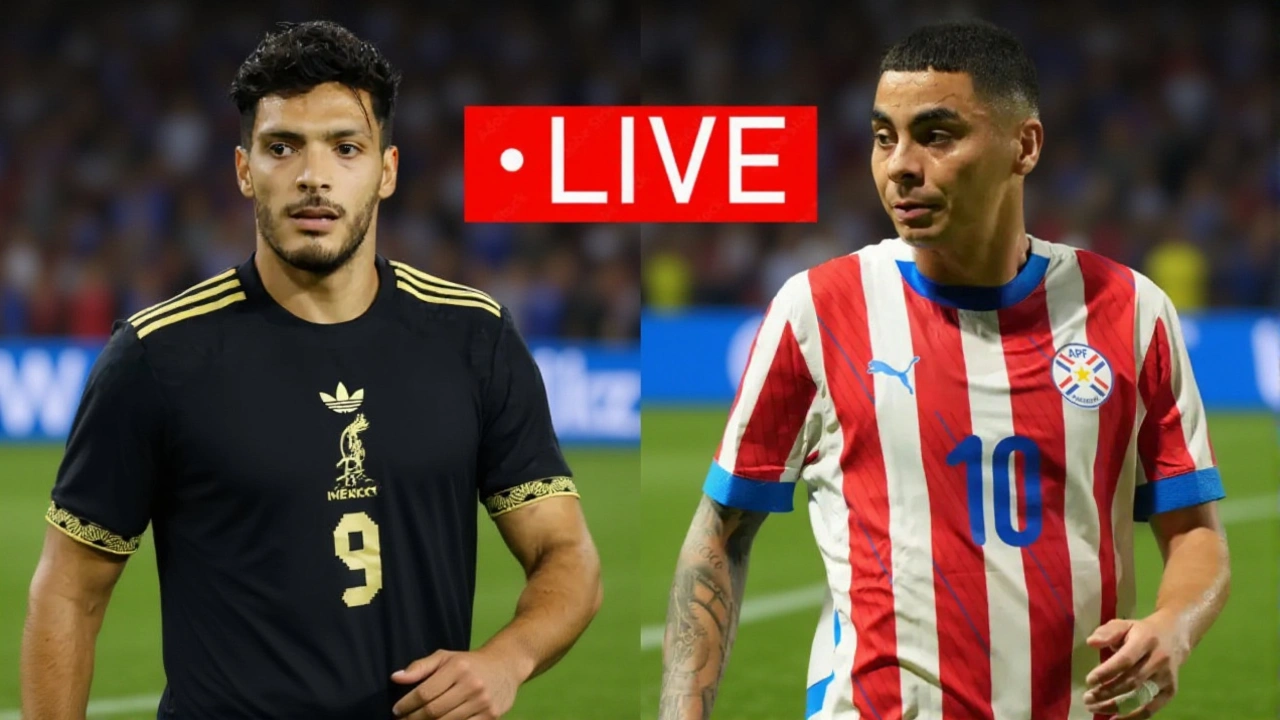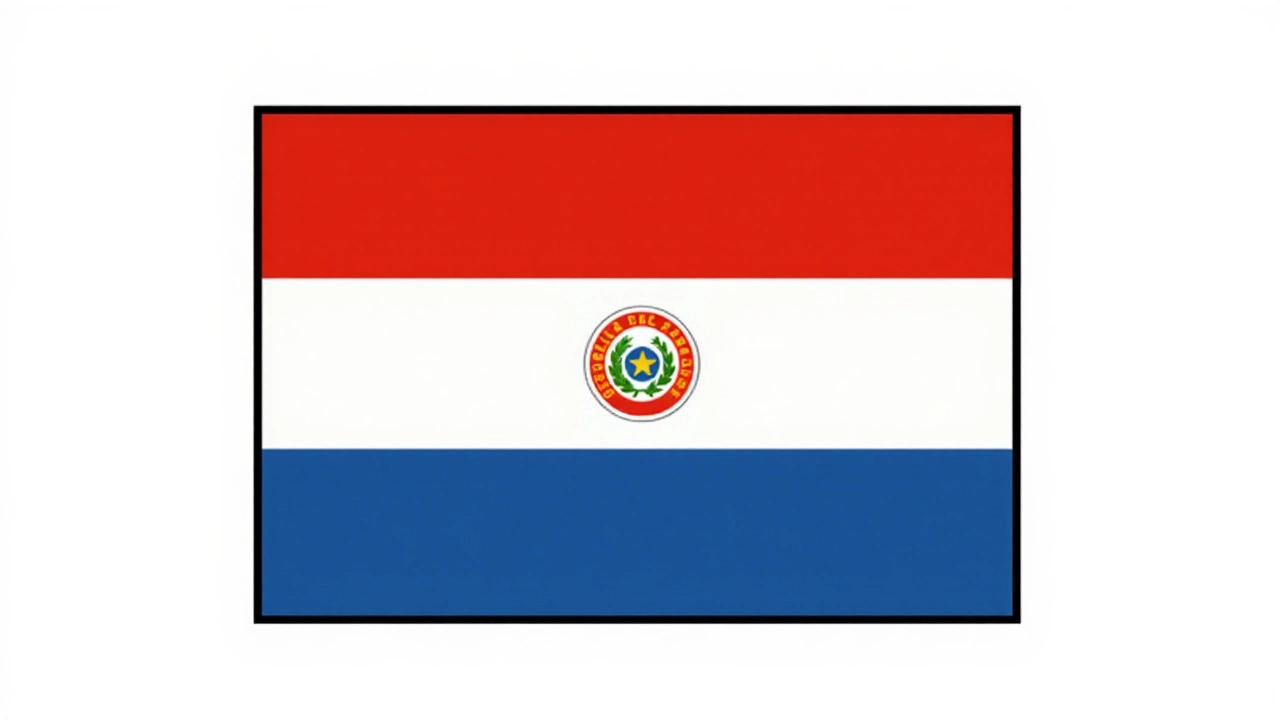The Paraguay national football team pulled off a shocking 2-1 victory over the Mexico national football team on Tuesday, November 18, 2025, at the Alamodome in San Antonio, Texas, in what turned out to be Mexico’s final match of the year. The result wasn’t just a loss—it was a symbolic blow to El Tri’s confidence, extending their winless run against Paraguay to three straight games and exposing cracks in a squad still rebuilding after a turbulent 2025 campaign. Kickoff was at 7:30 p.m. Central Time, drawing a packed crowd of 48,732 fans—nearly 75% of the stadium’s soccer capacity—and sparking heated debates over fan behavior, tactical decisions, and the future of Mexico’s young core.
A Night of Missed Chances and Unforced Errors
Mexico came into the match with high expectations. They’d won their previous two friendlies in 2025, and fans hoped this would be a tune-up before the CONCACAF Nations League kicks off next year. But from the first whistle, Paraguay looked sharper, hungrier, and more organized. Their opening goal came in the 22nd minute after a counterattack that exposed Mexico’s overcommitted fullbacks. The second, a clinical finish in the 63rd, sealed the deal. Mexico’s lone reply, a header from Orlando Gill in the 78th minute, was a bright spot—but it came too late. Gill, the 22-year-old forward earning his fifth cap, showed flashes of brilliance, but lacked support. The midfield, often the backbone of Mexico’s play, looked disjointed. Passes were wayward. Transitions were slow. And when Paraguay pressed, Mexico folded.
Fan Disturbance Sparks Controversy
What should’ve been a celebration of international soccer turned sour in the 66th minute. Roughly 200 spectators breached security barriers near the touchline, flooding into restricted zones. The game halted for seven minutes as stadium staff and local police cleared the area. Fox Deportes, the exclusive U.S. broadcaster, didn’t hold back in commentary. "Not something they want to see," one analyst said at the 660-second mark. "It ruins it for the rest of us." The moment went viral on social media, with fans in Mexico City and Los Angeles condemning the behavior as a disgrace to the national team’s image. The Mexican Football Federation later issued a statement pledging to "review fan conduct protocols," but offered no concrete penalties. For a team already under scrutiny for its discipline, this was another black eye.
Paraguay’s Resilience and Strategic Win
For Paraguay, this wasn’t just a win—it was redemption. Just weeks before, they’d lost 2-0 to the United States national team in a World Cup qualifier. Their performance against Mexico showed they’d regrouped. Coach Fernando Clavijo, who took over in late 2024, deployed a compact 4-2-3-1 formation that stifled Mexico’s attacking width. Their captain, veteran midfielder Diego Gómez, played 89 minutes, orchestrating play with calm authority. The victory marked Paraguay’s first win over Mexico since June 8, 2019—ending a four-match winless streak. And it wasn’t luck. Paraguay outshot Mexico 14-9, had 58% possession, and converted 2 of 4 clear chances. The $1.2 million appearance fee paid by Mexico’s federation clearly didn’t buy them a win.
Historical Context: A Shifting Balance of Power
Historically, Mexico has dominated this rivalry. The two sides have met 37 times since 1954, with Mexico holding a 19-12-6 advantage. But the last three encounters? All losses. October 2023: 1-0. March 2024: 2-1. And now, November 2025: 2-1. The tide has turned. Paraguay’s squad now features a blend of experienced Serie A and Primeira Liga players, while Mexico’s core remains heavily reliant on players from Liga MX—with limited exposure to high-pressure European environments. Referee Ricardo Montero of Costa Rica, part of CONCACAF’s elite panel, kept control despite the tension, but his assistants—Juan Zumba and Roddy Zhang—were criticized for missing two clear handballs in the box. No VAR was used, as it’s not mandatory in friendlies.

What’s Next for Both Teams?
Mexico’s next official match is a CONCACAF Nations League clash against Jamaica on March 25, 2026. But the real question is: Who will be on the pitch? Head coach Jaime Lozano faces pressure to integrate more players from Europe. The likes of Gill, 19-year-old midfielder Luis Rivera, and 20-year-old goalkeeper Mateo Sánchez may get more minutes—but only if they prove they can handle the pace of international football. Meanwhile, Paraguay’s next test is even steeper: a World Cup qualifier against Brazil on November 17, 2025. A win there could vault them into automatic qualification territory. For now, they’re riding high.
Behind the Scenes: Money, Media, and the Business of Friendlies
International friendlies are more than exhibitions—they’re financial engines. The $1.2 million fee Mexico paid Paraguay is standard for CONMEBOL vs. CONCACAF matchups, but it’s a drop in the bucket compared to what the Alamodome and local vendors earned. Ticket sales, concessions, and merchandise generated an estimated $4.3 million in local revenue. Fox Deportes, owned by Fox Corporation in New York City, broadcasted the match exclusively in the U.S., with no English-language alternative. BeIN Sports and Goal.com covered the event, but only Fox Deportes had live rights. For fans without Spanish fluency, this created a barrier. The lack of an English broadcast sparked criticism from Mexican-American communities, who say they’re being ignored despite being the largest demographic in attendance.
Frequently Asked Questions
Why did Mexico lose despite having more possession in previous matches?
Mexico controlled possession in 2024’s 2-1 loss to Paraguay, but this time, they lacked precision. Paraguay’s defense was compact, and Mexico’s attackers—especially in the final third—made poor decisions. The midfield failed to create space, and when pressed, the ball was lost too easily. Possession without purpose is dangerous, and Paraguay capitalized on every turnover.
How significant is Orlando Gill’s performance for Mexico’s future?
Gill’s goal was his first for the national team, and his pace and movement offered hope. But with only five caps at age 22, he’s still raw. He needs consistent minutes in a top-tier league to develop. If he’s not signed by a European club by next summer, his international progress may stall. He’s a symbol of Mexico’s youth movement—but one that needs proper support to thrive.
Why was there no English-language broadcast in the U.S.?
Fox Deportes holds exclusive Spanish-language rights to Mexico’s friendlies in the U.S., and Fox Corporation has chosen not to simulcast on its English channels like FS1. This decision prioritizes Spanish-speaking audiences, who make up the majority of live viewers. But with over 37 million Mexican-Americans in the U.S., critics argue it alienates fans who don’t speak Spanish fluently—and limits revenue potential.
What does this loss mean for Mexico’s World Cup qualifying chances?
It’s not a direct blow—World Cup qualifiers start in 2026—but it reveals a pattern: Mexico struggles against disciplined, physical teams. Paraguay’s style mirrors teams like Canada and the U.S., who will be Mexico’s rivals in the Hexagonal. If the defense and midfield don’t improve by March, Mexico could find themselves fighting for a playoff spot instead of automatic qualification.
Is the Alamodome becoming a second home for Mexico’s national team?
Absolutely. Since 2018, Mexico has played eight matches at the Alamodome, winning five, losing two, and drawing one. San Antonio’s large Mexican-American population and central U.S. location make it ideal. The venue’s 65,000-seat capacity and modern facilities outshine many stadiums in Mexico. Expect more friendlies here—especially ahead of major tournaments.
Why did Paraguay win this time when they’ve lost so often to Mexico?
Paraguay’s squad has evolved. Gone are the days of relying on aging stars. Now, they have a balanced mix of youth and experience, with players from Argentina, Spain, and Brazil. Their coach emphasized defensive discipline and quick transitions. Mexico, meanwhile, is stuck in transition—trying to blend Liga MX talent with European-style tactics without fully committing to either. That gap was the difference.
